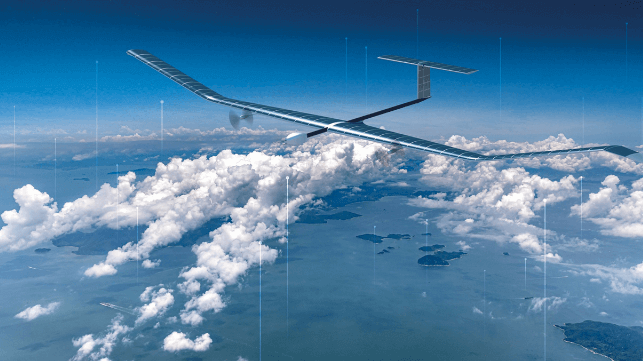Record-Setting Drone Could Change Maritime ISR - or Backstop GPS

Airbus' giant, ultralight, ultra-high-endurance Zephyr S drone has stayed aloft for longer than any unmanned aircraft in history - and its success could bring new capabilities for maritime surveillance and GPS-like positioning.
Zephyr S is a 150-pound, hand-launched drone built for high altitude operations. It flies in its own sky at 80,000 feet, far from commercial traffic and immune to the vagaries of the weather. Its 80-foot wingspan and solar-cell power are enough to keep it aloft for weeks at a stately pace of 30 knots.
The drone prototype took off from the U.S. Army's Yuma Proving Ground on June 15, and it has now been continuously aloft for 27 days. Most of that time has been spent circling over Arizona, but last month, the operators also decided to take it for a trial run over water to Belize and back.
Open source flight data from the ADS-B Exchange tracked Zephyr over Texas and the U.S. Gulf on June 27. The plane showed up again over Belize City on June 29 and headed back home the next day, according to tracking compiled by The Drive.
This route took Zephyr S near prime smuggling territory in the western Caribbean, the area off Central America constantly monitored by the U.S. government for anti-narcotics enforcement. The Army has its own reasons for testing out Zephyr, but maritime security is one of the platform's original applications: as a "high altitude pseudo-satellite," Zephyr can hold position and monitor an ocean area for an indefinite period of time. Airbus has also worked on a "Zephyr T" variant for heavier-payload maritime missions.
Under the Army's sponsorship, the platform might also take on the role of a GPS backup system. GPS' weak signals are relatively simple to spoof or jam, and some geographic areas (like the northern Black Sea) are notorious for GPS meddling. A platform located nearer to earth - like a pseudo-satellite - could deliver a stronger signal and provide an backup to conventional GPS. Zephyr's Army sponsors have spoken of the possibility of a resilient positioning, navigation and timing (PNT) mission for the drone, and the Army unit tasked with operating the program is the Assured Positioning, Navigation and Timing/Space Cross-Functional Team, part of Army Futures Command.
Multiple PNT options
Zephyr could be one of several novel PNT alternatives under research by the military. The U.S. Office of Naval Research, the U.S. Department of Transportation and the National Science Foundation recently underwrote a successful trial to use signals from the Starlink commercial satellite fleet for positioning - a task for which Starlink was never intended.
Starlink accounts for about half of all working satellites in orbit - 2,500 strong and growing - and with ONR's backing, a team at Ohio State University figured out how to pick up and process enough information from the satellites' signals to calculate a position to within about eight meters. As the Starlink fleet grows, the speed and accuracy of the positioning technique will go up, lead researcher Zak Kassas told Ars Technica. The lab bench setup is complex and isn't ready for use on the bridge just yet - nor is it an authorized Starlink product - but in future it could provide a resilient alternative for navigation.
